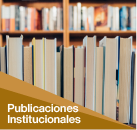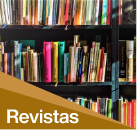Mostrar el registro sencillo del ítem
Fortalecimiento de la Expresión Oral En Lengua Quechua para el Aprendizaje de las Niñas y los Niños de en una Escuela Primaria
| dc.contributor.advisor | Zea Sánchez, Bacilio | |
| dc.contributor.author | Angulo Blanco, Juan Antonio | es_PE |
| dc.contributor.author | Ccahuana Luna, Judith | es_PE |
| dc.date.accessioned | 2025-06-02T05:08:35Z | |
| dc.date.available | 2025-06-02T05:08:35Z | |
| dc.date.issued | 2024-06-03 | |
| dc.identifier.uri | http://repositorio.pukllasunchis.org/xmlui/handle/PUK/139 | |
| dc.description.abstract | En este trabajo de investigación abordaremos el fortalecimiento de la lengua quechua, en el contexto de escuela rural con niños y niñas de quinto grado de Educación Básica Regular. Sabemos que en una educación intercultural bilingüe se requiere implementar estrategias que aborden la diversidad lingüística, como parte del fortalecimiento de la identidad y afirmación cultural. Sin embargo, existen dificultades en su implementación y puesta en práctica por parte del Ministerio de Educación y por los mismos maestros de Educación Intercultural Bilingüe. Trabajar con los niños y niñas de zona rural, es una oportunidad única, ya que estos niños traen a la escuela una diversidad de saberes de su localidad, los mismos que han heredado desde sus antepasados y son practicados por sus padres y familiares. Esta realidad es muy importante ya que nos permite promover el interaprendizaje y plantear, asimismo, aprendizajes significativos. Esta investigación tiene carácter narrativo y un enfoque eminentemente cualitativo, además tiene como objetivo, diseñar estrategias educativas para fortalecer el uso oral de la lengua quechua. Por ende, nos propusimos, como objetivos específicos, diagnosticar el uso del idioma quechua y diseñar y aplicar diferentes estrategias con un grupo de estudiantes del nivel primario de zona rural, como parte de su educación intercultural y para la vida. Para llevar a cabo este modelo de investigación, se registró y recogió testimonios de los padres de familia, docentes, niños y niñas de la Institución Educativa y se organizó la información de forma detallada empezando desde el diagnóstico del uso oral del idioma quechua. A partir de estas observaciones, se elaboraron diversas estrategias, las mismas que se aplicaron para asegurar la práctica del idioma quechua y fortalecer de esta manera la expresión oral en la lengua materna. Con los resultados alcanzados, llegamos a la conclusión de que los niños andinos están perfectamente dotados para ser bilingües coordinados si tienen la oportunidad de usar oralmente su idioma en diferentes espacios. | es_PE |
| dc.description.abstract | Abstract In this research work we will address the strengthening of the Quechua language, in the context of a rural school with boys and girls in fifth grade of Regular Basic Education. We know that in bilingual intercultural education it is necessary to implement strategies that address linguistic diversity, as part of strengthening identity and cultural affirmation. However, there are difficulties in its implementation and putting into practice by the Ministry of Education and by the Intercultural Bilingual Education teachers themselves. Working with children from rural areas is a unique opportunity, since these children bring to school a diversity of knowledge from their locality, the same knowledge that they have inherited from their ancestors and is practiced by their parents and family members. This reality is very important since it allows us to promote interlearning and also propose significant learning. This research has a narrative nature and an eminently qualitative approach; it also aims to design educational strategies to strengthen the oral use of the Quechua language. Therefore, we proposed, as specific objectives, to diagnose the use of the Quechua language and design and apply different strategies with a group of primary level students in a rural area, as part of their intercultural and life education. To carry out this research model, testimonies from parents, teachers, boys and girls of the Educational Institution were recorded and collected and the information was organized in detail starting from the diagnosis of the oral use of the Quechua language. From these observations, various strategies were developed, the same ones that were applied to ensure the practice of the Quechua language and thus strengthen oral expression in the mother tongue. With the results achieved, we conclude that Andean children are perfectly equipped to be coordinated bilinguals if they have the opportunity to use their language orally in different spaces. Keywords: Bilingual Intercultural Education, oral use of Quechua, language learning. | es_PE |
| dc.description.abstract | Pisi rimayllapi willasayki Kay hatun maskana llamk’ayniykupi t’aqwirisunchik, Qichwa Simita llanllarichinanchikmanta, hawa llaqta Yachaywasinkunapi, pisqa yupay uña sulk’a wawakunawan Educacion Basica Regular sutichasqapi. Yachasqanchikman hina huk yachay nisqa Educación Intercultural Bilingüeqa, munanchik churayta tukuy ruraykunata qichwa siminchis rimanapaq, chaywantaq aswantaran llanllarichinanchikpaq hinantin ayllunchikpi yachayninchiskunamanta. Ichaqa, llamk’aynin ukhupi taririkun tukuy sasachakuykuna, imaraykuchus Ministerio de Educación sutichasqa wasimanta, Hamawt’akuna iskay qhawayniyuq kananku. Hawa llaqtapi wawakunawan llank’ayqa, hukmanta yachay qarariymi, chay wawakunaqa yachanku, apamunku tukuy yachayta llaqtankumanta. Ñawpaq awichunchikkunaqa tukuy yachayninkuta yacharichitamanchik, ñawpaqman tayta mamakuna kaqllataq ayllunchikkuna puririchinanpaq. Kay llamk’ana maskana ruwayqa kachkan huk qhawariyniyuq, qhawarin tukuy rurayta, kaqllatataq kachkan huk p’itwiy nisqawan, ruray tukuy ruraykunata qichwa siminchis llamllarichinanchikpaq, chaypaqtaq qawariyku kimsa p’itwiykunata, ñawpaqta qawarisaqku imaynas kachkan qichwa rimaywan chayta, chaymanta rurarisaqku tukuy ruwaykunata hinamantataq llank’arichkaqku tukuy ruraynikuta chay rurayqa llamk’arikunqa hawa llaqtapi tiyaq wawakunawan, ichaqa qhawarinqa chay kawsay suyuwan. Ñawpaqman kay hatun llamk’ayninchikta aparinanchikpaqqa, uqarikun tukuy hatun yachaykunamanta, willarikuykunamanta, yuyaymanakunamanta tapurikun tayta mamakunata, yachachiqkunata, wawakunata chay yachaywasimanta. Chay yachaykunata allcharikun qallariyninmanta t’aqwirikuspa, qichwa simi rimaykunamanta, maykunapis rimanku wawakuna, chaypaqmi qhawarikun imaymana yachanakunata wawakuna huqmanta qichwa simi yuyarinankupaq, paykuna kawsayninmanta pacha llipim qhawayninkuta yupaychaspa. Kaqllamantataq kay ruray apariwasun huk tukuyman, pisqa huñu wawakunan mana rimankuchu qichwa simi rimayninchikta Yachay wasipi kachkaspa. Hinamantataq, rurarikun tukuy yachana yachaykuna Qichwa simip rimaynin ñawpaqman llamllarinampaq. Kay llank’aywan hayparinchik llipim hawa suyu wawakuna, allim yuyaysapa kanankupaq, huk, iskay hinallataq kimsa simikuna rimanankupaq, paykunaqa hastawanpas yacharinkumanmi Inglis nisqa simitapas. | es_PE |
| dc.format | application/pdf | es_PE |
| dc.language.iso | spa | es_PE |
| dc.publisher | Asociación Pukllasunchis | es_PE |
| dc.rights | info:eu-repo/semantics/openAccess | es_PE |
| dc.rights.uri | https://creativecommons.org/licenses/by-nc-sa/4.0/ | es_PE |
| dc.subject | Educación Intercultural Bilingüe | es_PE |
| dc.subject | uso oral del quechua | es_PE |
| dc.subject | aprendizaje de lenguas | es_PE |
| dc.title | Fortalecimiento de la Expresión Oral En Lengua Quechua para el Aprendizaje de las Niñas y los Niños de en una Escuela Primaria | es_PE |
| dc.type | info:eu-repo/semantics/bachelorThesis | es_PE |
| dc.type.version | info:eu-repo/semantics/publishedVersion | es_PE |
| dc.publisher.country | PE | es_PE |
| dc.subject.ocde | https://purl.org/pe-repo/ocde/ford#5.03.01 | es_PE |
| renati.advisor.orcid | https://orcid.org/0009-0001-4927-2045 | es_PE |
| renati.type | https://purl.org/pe-repo/renati/type#tesis | es_PE |
| renati.level | https://purl.org/pe-repo/renati/nivel#tituloProfesional | es_PE |
| renati.discipline | 112096 | es_PE |
| renati.juror | Eguiluz Duffy, Cecilia María | es_PE |
| renati.juror | Suárez Sánchez, Richard | es_PE |
| renati.juror | Conde Marquina, Antonieta | es_PE |
| thesis.degree.name | Licenciado en Educación Primaria Intercultural Bilingüe | es_PE |
| thesis.degree.discipline | Educación Primaria Intercultural Bilingüe | es_PE |
| thesis.degree.grantor | Escuela de Educación Superior Pedagógica Privada Pukllasunchis | es_PE |
| renati.author.dni | 71142667 | |
| renati.author.dni | 72395952 | |
| renati.advisor.dni | 40251513 |







